Wide Tires Vs Narrow Tires: Exploring the Pros and Cons
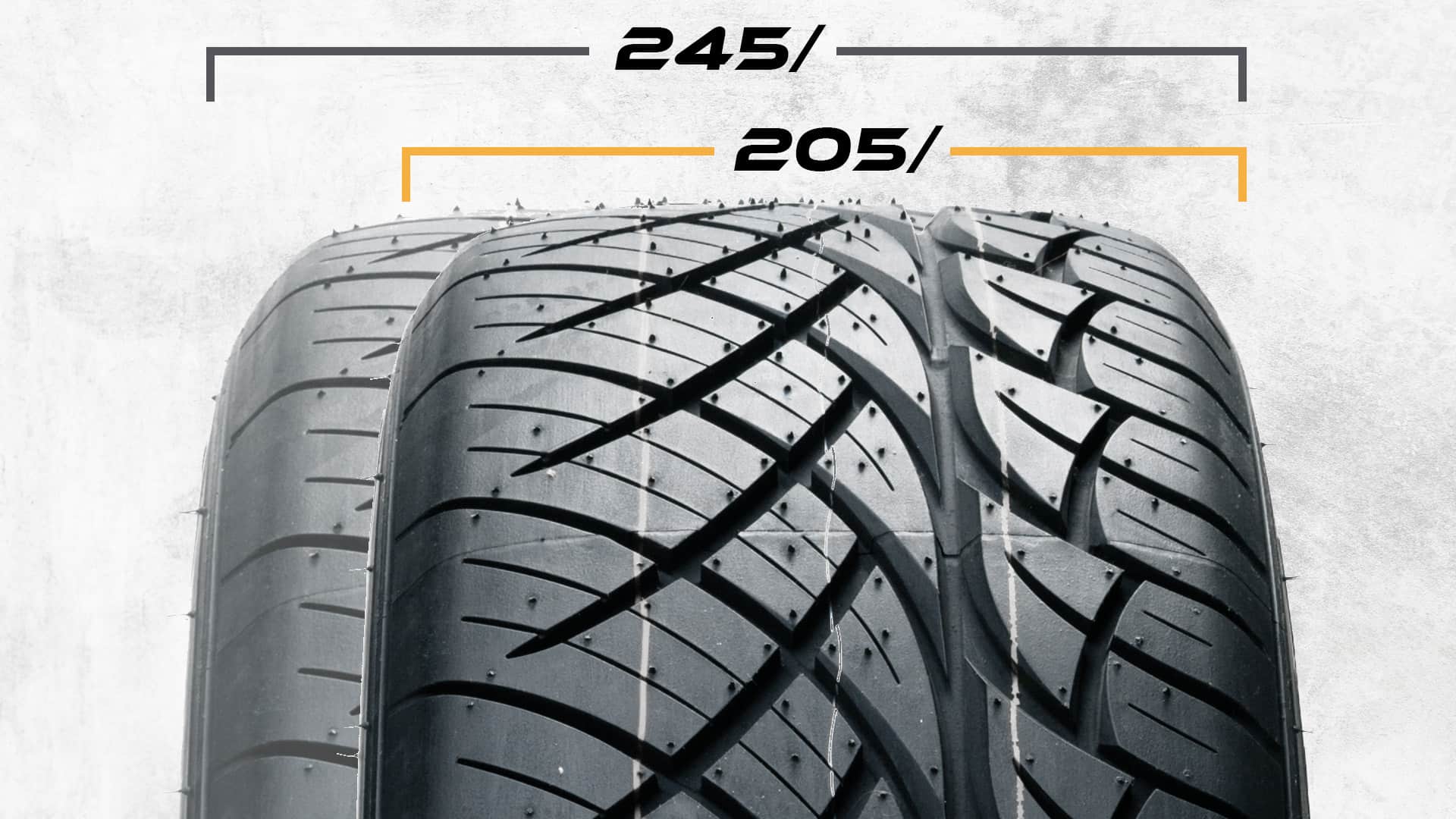
The debate on whether to use wide tires vs narrow tires for vehicles is an ongoing discussion among car enthusiasts. While some believe that wider tires offer better grip and handling on the road, others argue that narrow tires are more fuel-efficient and provide greater riding comfort.
In this article, we will explore the pros and cons of using wider tires backed by real words tests, including their impact on fuel consumption, traction in snowy conditions, as well as their influence on ride quality and performance.
Pros of Wide Tires
Wider tires ensure better grip
When it comes to tires, wider sure does mean better grip. But don’t take our word for it, let ADAC’s experts prove it to you. They ran tests on four different tires that were fitted on a VW Golf VII in various sizes ranging from 195mm to 225mm inches.
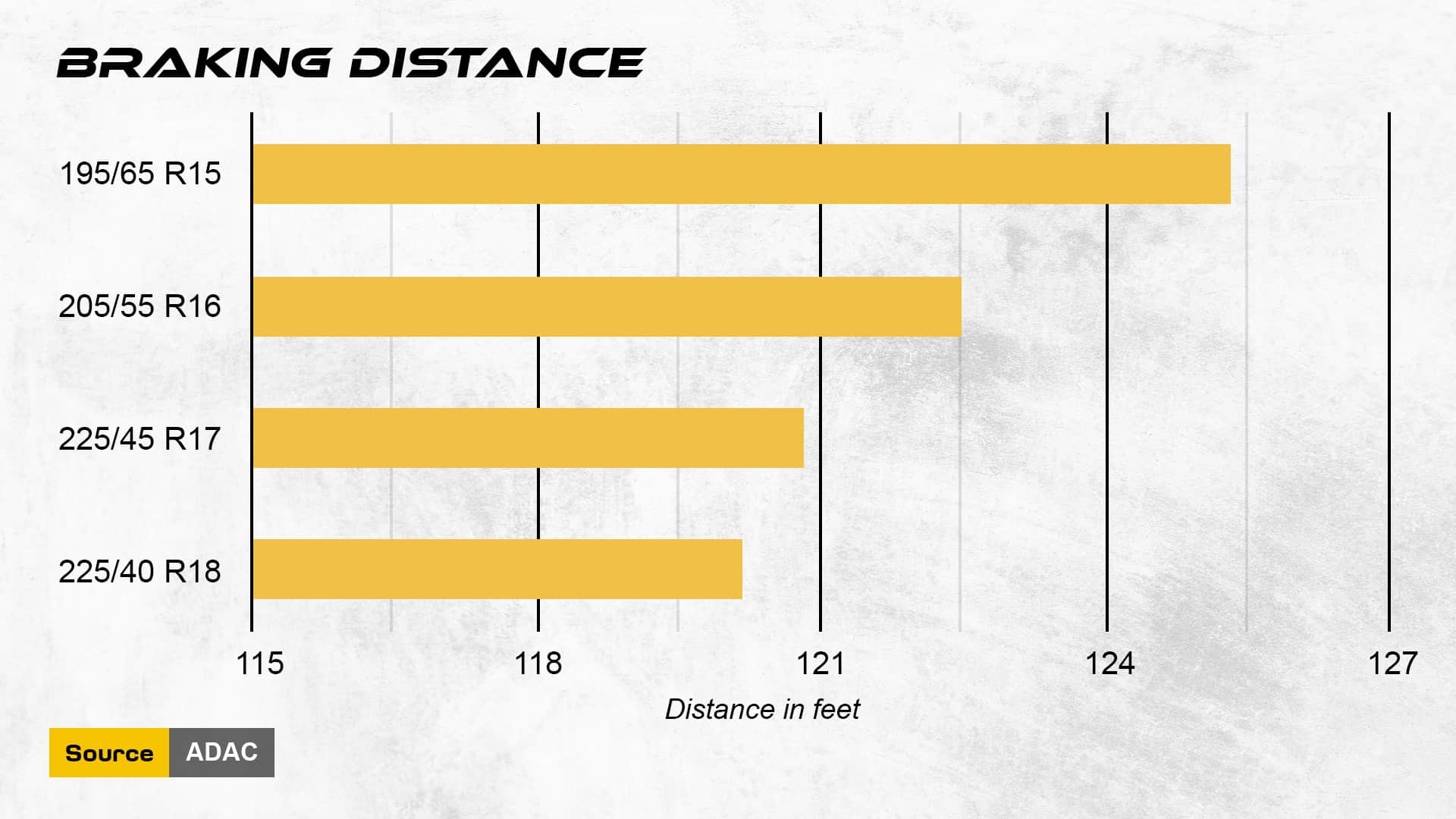
According to the results, on a dry summer day, the saying “the wider the tire, the better the grip” is indeed true. (When things get wet, however, this doesn’t hold up. More on this later)
Why? Because of their lower relative height, wider tires are more rigidly built which helps them handle better. Plus, they can brake more efficiently with a larger surface area in contact with the road.
One of the tests at ADAC showed that the stopping distance from 60 mph decreased by almost six feet between a pair of narrow 195mm tires and the wider 225mm. That may not sound like much but trust us: every inch counts when it comes to emergency braking.
Longer Lifespan
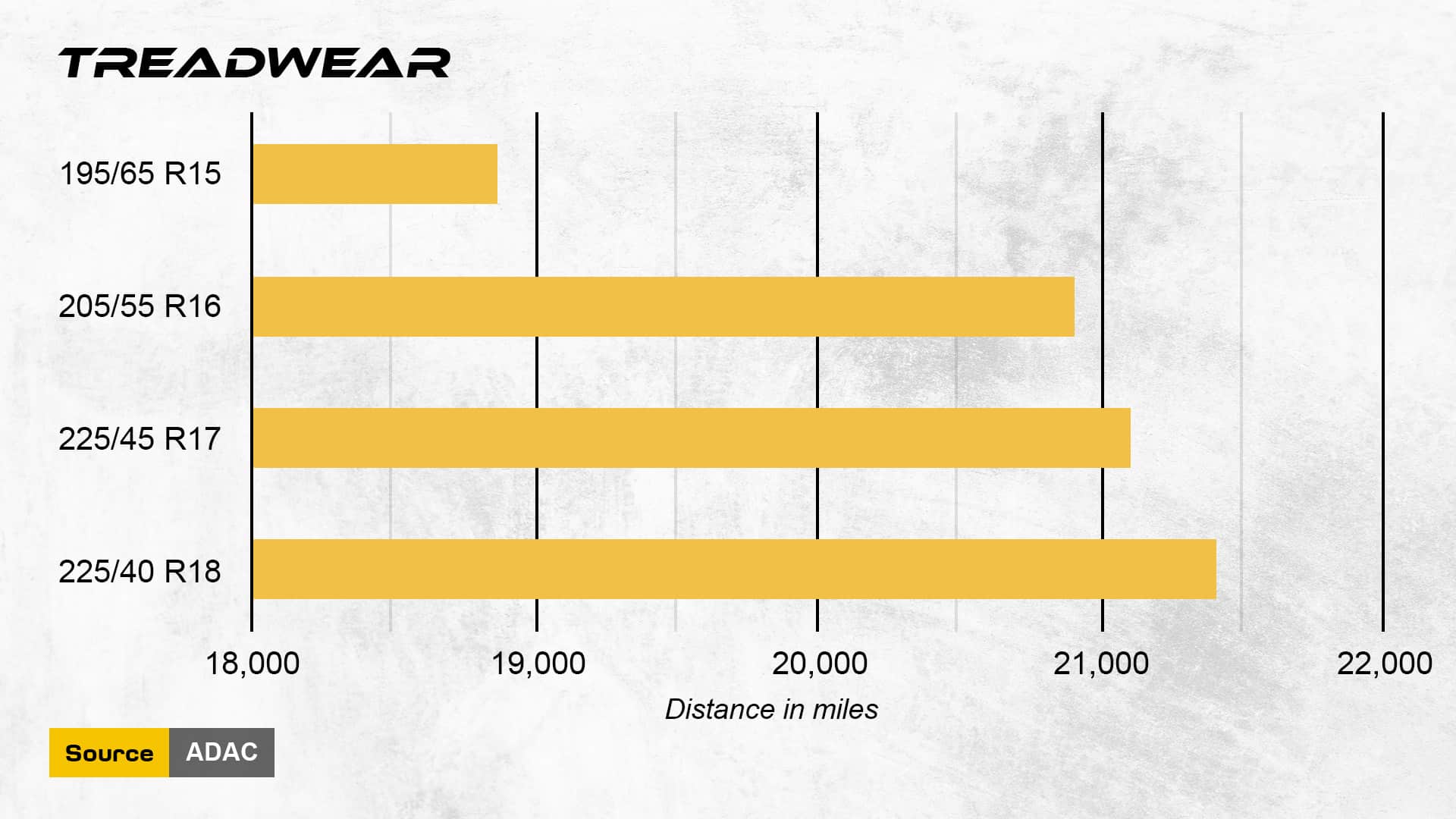
Wide tires also have another big advantage: their low sidewalls give them more stability, which in turn helps increase tire longevity. By providing a larger contact area with the pavement, these tires are less likely to wear down or become damaged due to deformation.
Cons of Wide Tires
Risk of hydroplaning
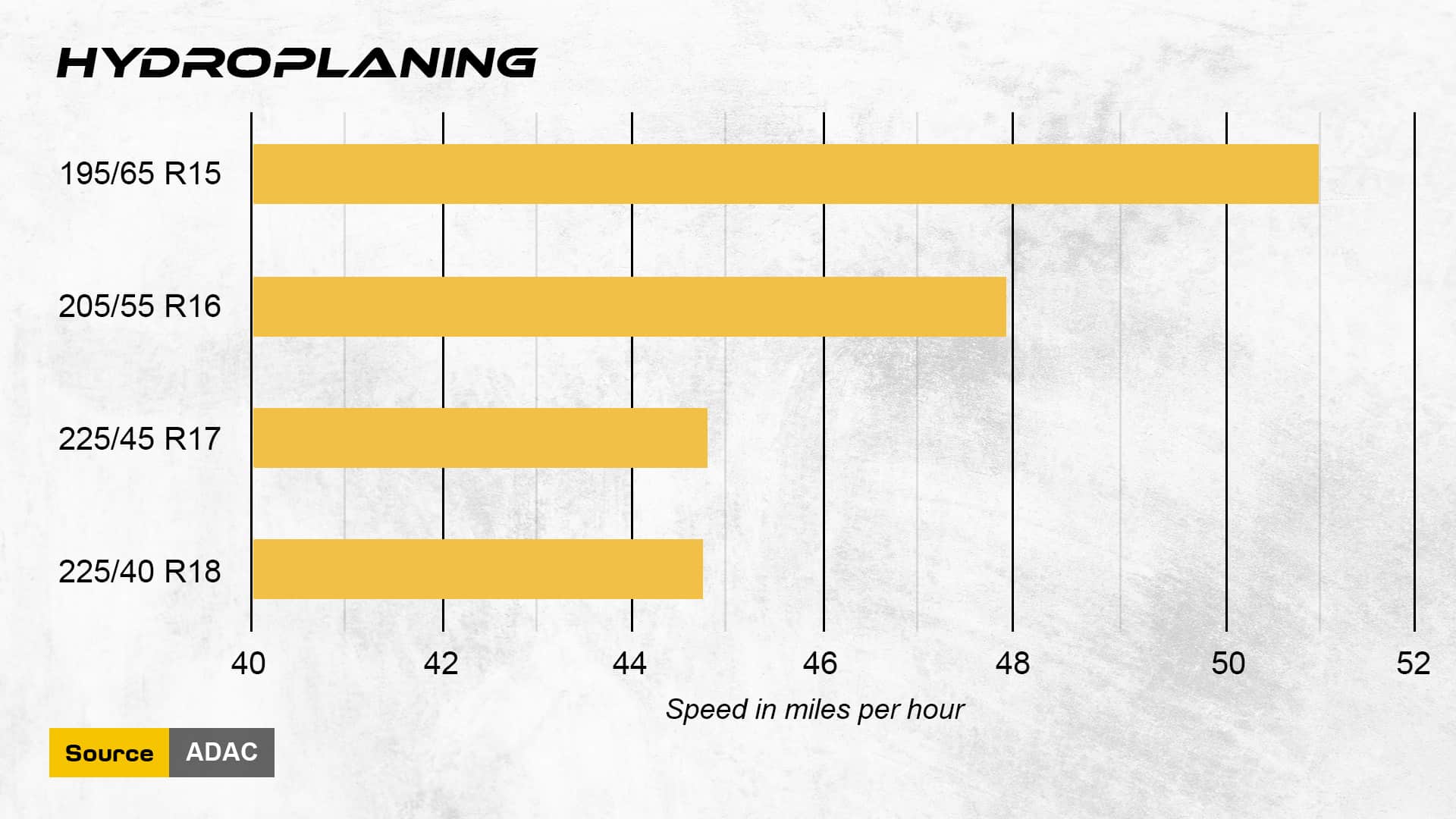
While wider tires offer plenty of advantages on dry roads, they can be outperformed by narrower alternatives in wet conditions. That’s because the wider the tire is, the more water it has to “evacuate” from the contact area – and once the tread starts struggling to evacuate it from the contact area, grip is lost and hydroplaning occurs.
As you can see in the chart above, narrow tires are remarkably resilient against hydroplaning compared to their wider cousins.
In fact, they’ll keep you going a good 10 mph longer before any loss of grip occurs! When you’re driving on slick or rainy surfaces, this difference can mean staying safe and in control even when things get dicey.
more fuel consumption
Wider tires are just not as fuel-efficient as their narrower siblings!
The reason for this is simple: wider wheels are generally heavier than smaller ones. In fact, an 18-inch wheel can weigh up to 10lbs more than a smaller 15-inch one! On top of that, wider tires have stronger rolling resistance which adds even more heft to your efforts.
When you do the math, it becomes clear just how much these changes can hurt your fuel economy. For example, increasing the tread width by just 30mm can increase your car’s air resistance by a whopping 6% – meaning you’ll be burning through gas much faster than before!
Less Grip In Snow
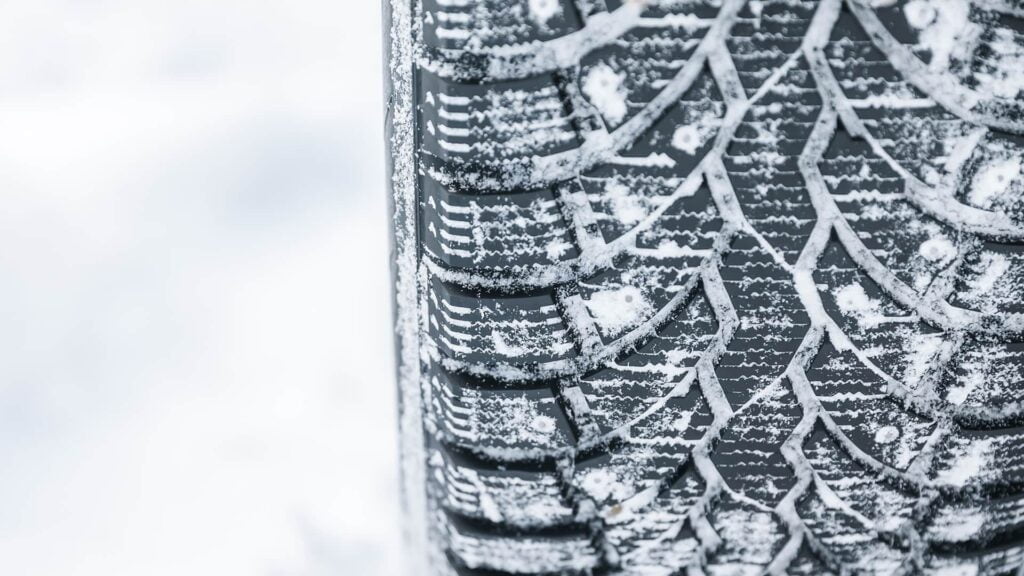
When it comes to winter driving – a wider footprint means a higher risk of slipping and making things a bit more dangerous.
The smaller contact patch of narrow tires works in their favor on wintry surfaces. They offer more grip by placing higher surface pressure against the road, providing better traction in snow and icy environments.
More Road Noise
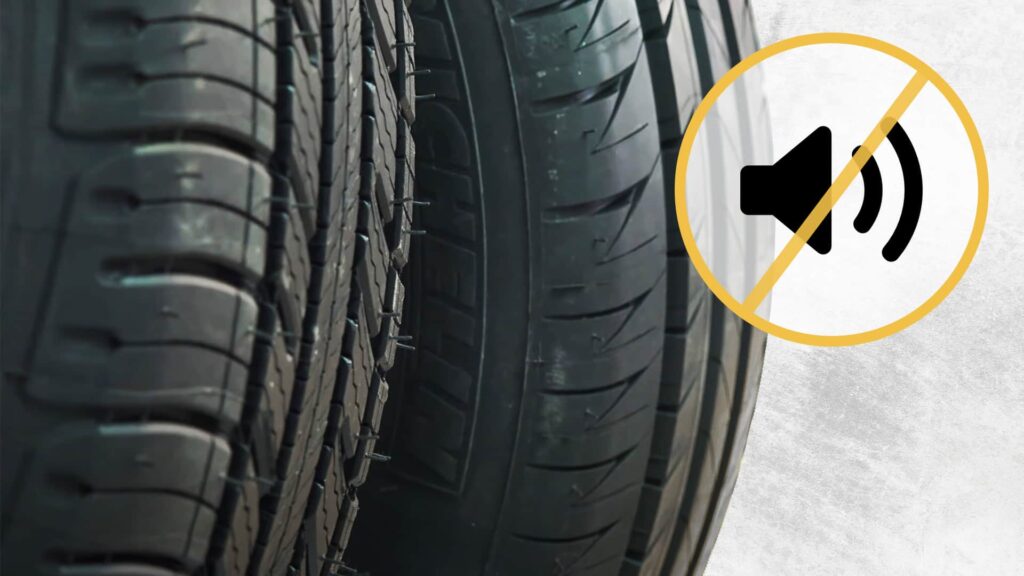
Wider tires tend to produce more road noise than their narrower counterparts as they have a larger contact patch area and make more contact with the ground.
Are Narrow Tires Faster Than Wide Tires?

If you were to pit one narrow tire and one wide tire against each other in a race down a hill, the narrow tire would likely roll more quickly because it has less rolling resistance – both in terms of air resistance and friction with the ground.
However, when it comes to determining which tire width is “faster” on your car, things get much more complicated. The road surface, the weight, power, and the drivetrain of the car – all play a significant role in this calculation.
For example, let’s say you have a four-wheel-drive passenger car with moderate power doing a drag race on dry tarmac. In this case, running the race with narrow tires might actually make your vehicle faster than using wider ones.
On the contrary, a powerful rear or front-wheel drive vehicle would not get enough grip from narrow tires, and trying to accelerate quickly would probably end in wheelspins.
So, there’s no one-size-fits-all answer when it comes down to tire width and speed. With so many factors at play – from vehicle weight to horsepower output to road conditions – it’s simply too difficult to generalize about which option would give you the best performance overall.
It’s important to note that you should always choose tire sizes recommended by the car manufacturer. Choosing the wrong size tires for your car can potentially damage the vehicle and pose safety hazards.
How To Check What Tire Sizes Are Allowed For Your Vehicle
One of the most straightforward methods to determine the correct tire size for your vehicle is by locating the tire placard. This can usually be found on a sticker attached to the driver’s side door jamb, fuel filler flap, or inside the glove compartment.
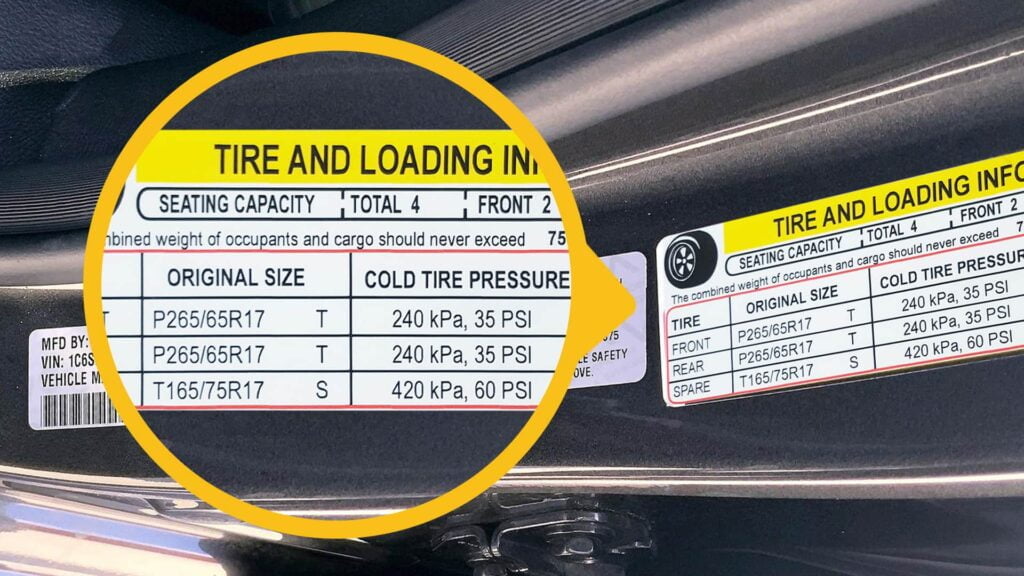
Wide Tires Vs Narrow Tires: FAQs
Do Wider Tires Influence Fuel Economy?
It’s true that larger tires can decrease your fuel economy due to their heavier weight and higher rolling resistance. Conversely, smaller tires tend to provide better fuel efficiency because they require less power to get rolling in stop-and-go traffic.
However, when it comes to cruising at high speeds on the freeway, larger wheels may help improve fuel efficiency – which seems counterintuitive. This is because while a smaller wheel may be easier to get moving than a larger one, the engine must work harder to make the smaller tire cover the same distance as a bigger one.
Do Wider Car Tires Give You More Grip?
Wider tires tend to provide more grip on dry roads than narrower ones. The increased contact patch created by a wider tire allows for greater traction and improved handling performance.
However, it’s also true that wider tires have less weight per square inch because they distribute the vehicle’s weight over a larger surface area. This can have implications for things like braking distance and cornering stability – depending on the conditions of the road surface.
For example, while wider tires are better for dry roads, narrow tires can often provide better grip in icy or snowy conditions. In these scenarios, having a smaller contact patch can actually be beneficial – as the pressure exerted on each individual point of contact is greater, leading to improved traction.
It’s also worth noting that other factors such as tire material and tread pattern play important roles in determining overall grip performance.
Are Wider Tires More Comfortable?
In general, the width of a tire does not have a direct impact on how comfortable it is to ride on. Instead, tire comfort is more closely tied to its aspect ratio – or the height of its sidewall relative to its width.
Tires with higher aspect ratios tend to be more comfortable than low-profile options because they have more air inside that can absorb shocks from bumps and rough road surfaces. So if we assume everything else is equal and only the tire width changes while keeping constant the rim diameter and aspect ratio, wider tires can actually offer a slightly higher profile then their narrower counterparts. This means wider tires are usually considered to be slightly more comfortable than narrower ones in this scenario.
Why Are Wider Tires More Prone To Hydroplaning?
Wider tires can be more prone to hydroplaning than their narrower counterparts because of the larger contact patch of the tire.
Essentially, when driving in wet conditions, each tire must displace water from the surface of the road in order to maintain traction. A wider tire has a greater amount of water to contend with – meaning it will require more time to evacuate this excess liquid from its contact patch.
Do Wide Tires Wear Faster?
Wider tires typically wear more slowly than narrower ones. This is because a wider contact patch results in a lower weight per square inch of contact area – which in turn means less friction and heat generated during use.
